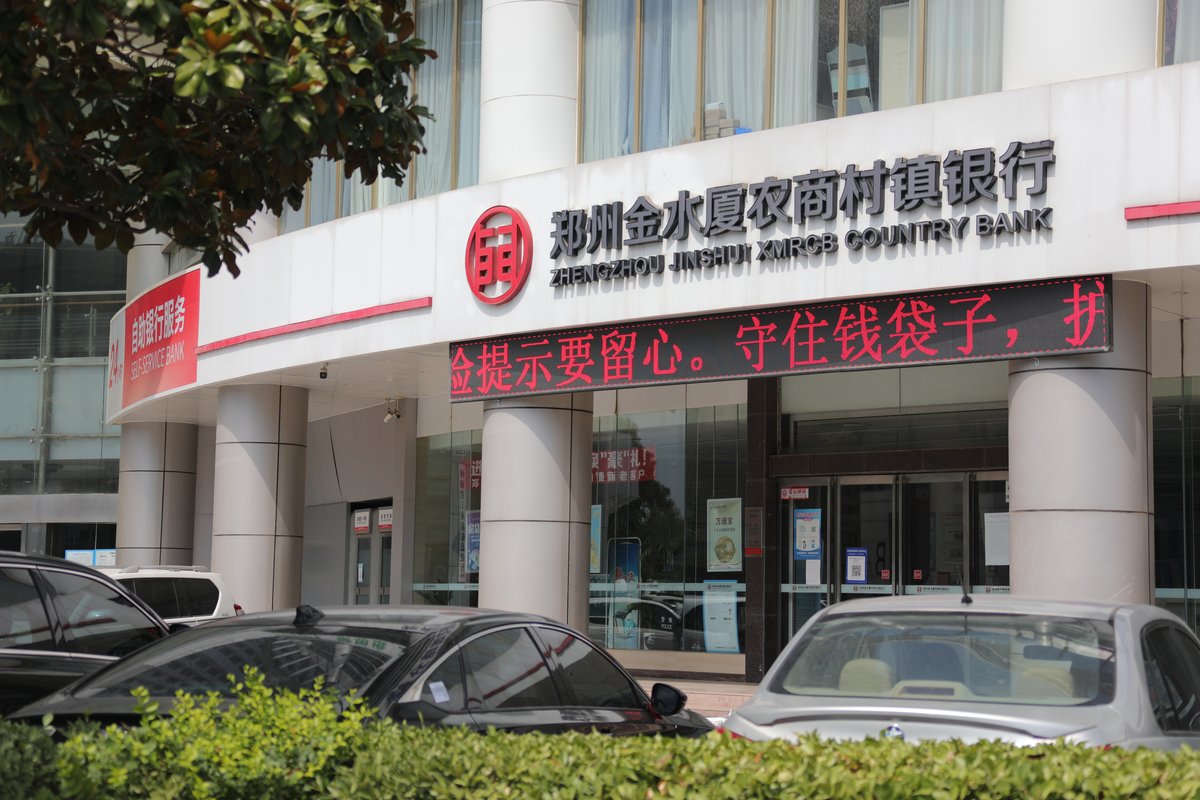Rural banks were supposed to help farmers make a living and remote areas develop. How did they become so problematic?
Since April, customers of four banks in Henan province who have been unable to withdraw their money have been making headlines worldwide. In early June, their Covid-19 health codes mysteriously turned red, preventing them from visiting Zhengzhou, the provincial capital, to protest.
But protest they did in early July, with around 1,000 depositors gathering in front of the Zhengzhou branch of the People’s Bank of China (PBOC) to demand accountability for their savings.
Although the matter is still under investigation, it appeared from preliminary findings that these four banks were guilty of both corruption and criminally poor organizational structures, which allowed a single local company to siphon billions of yuan into its private coffers.
Abysmal this case may be, but it is far from exceptional. The Paper identified an additional bank in Henan and another two in Anhui province that recently prevented customers from making withdrawals.
That all these institutions are rural banks is significant given their vital importance to local development. Last year, the PBOC identified this group as making up the majority of China’s high-risk lending banks. American credit agency Standard and Poor’s names them as having “the highest nonperforming loan [when repayment is severely delayed] ratios” of all Chinese banks.
“Rural banks generally have less capital,” explains Dou Benbin, head of risk management at the Shanghai Minhang Shangyin Village Bank between 2012 and 2018. That, “coupled with the rural economy performing poorly, especially the economic downturn in recent years” means rural banks are in a weak position.
But rural banks are hugely important for rural areas. Economist Wan Zhe, a professor at Beijing Normal University, noted in The Paper earlier this month that these institutions approve around 90 percent of all banking loans across the country each year, underlining their importance in fueling China’s recent economic development.
Rural banks are a unique facet of Chinese life. They are independent institutions at the county, town, and village level, tasked with developing rural areas through financing the business of the countryside: namely, farming and small enterprises.
They were formed by the commercial currents of Reform and Opening Up from the late 1970s, when commercialization and privatization became the new watchwords. The old rural funding system, the state-backed rural credit cooperatives of the planned economy, were largely insolvent and doled out small loans, not enough for more entrepreneurial farmers with big projects. As loans from bigger banks required a house as collateral, they were out of reach for the many farmers who lacked a property certificate.
Meanwhile, over the 2000s, many major banks shut down branches in rural areas to focus on the more lucrative markets in the fast-developing cities. By June 2009, the then China Banking Regulatory Commission (CBRC, now known as the China Banking and Insurance Regulatory Commission) reported that 3,000 towns had no banking outlets at all. The Financial Times estimated at the time that it meant 60 million people lacked any access to banking services.
So it was that in 2006, the CBRC lowered the threshold amount of capital required to set up banks in rural areas, hoping to fill the gap. Any company or person with enough capital, even foreign banks, could create one with the approval of local government and banking regulators. The idea quickly took off, as the number of institutions swelled from 17 in 2007 to 1,071 seven years later. As of the end of 2021, there are 1,651 (36 percent of all its banking institutions).
The minimum amount needed to open one is small, ranging from 50 million yuan at the county level, to 3 million yuan for towns, and 1 million yuan for villages—mere minnows when set beside state-owned or urban banks like ICBC or China Construction Bank.
Their territory is cramped, forbidden by regulations from doing business beyond the borders of their local domain. Likewise, their services are simple. Amenities like wealth management are left to urban banks, while rural banks limit themselves to the basics: deposits, loans, and remittances.
There are, however, benefits to banking with these humbler brands. “The services are a little better,” claims Dou. Not only is there a shorter queue for the cashier, but “the interest rate is slightly higher than the big banks, by about 0.5 percentage points.”
Yuan Ran, a civil servant in Beijing, was attracted to one of the Henan rural banks by just these higher interest rates, and is now one of the depositors who cannot recover his money. “The interest rate for one year was 4.85 percent,” he tells TWOC. While this was only around 0.85 percentage points higher than most national banks, it represented an extra 8,500 yuan on his deposit of 1 million yuan.
They have provided a valuable community service, helping farmers bid farewell to the days when they would “run up to 10 kilometers” to find a single bank, according to Dou.
He says the bank where he used to work was a golden opportunity for local businesses, particularly tech-based firms. “Large banks were reluctant to lend, because tech-based micro and small-enterprises do not have collateral.” According to Dou, Minhang issued loans of between 1 to 3 million yuan to 300 such companies to promote their development. Of these loans, Dou says 98 percent were repaid in full.
Rural banks trumpet their credentials as marching in step with government rural policy. A statement at the end of March by Shangcai Huimin Village Bank, for example, says “serving rural revitalization” is their “responsibility and mission,” pointing to recent loans to a local paper company and a pig breeder.
Yet Shangcai is one of the four banks caught up in the recent Henan scandal.
Rural banks struggle with a major contradiction. They were originally for humdrum, nickels-and-dimes finance, “positioned to serve agriculture, rural areas, and farmers,” writes Wan. “But as banks, they have commercial operating pressures and must suffer from so-called ‘profit-seeking.’”
“The state requires them to support farmers, right?” says Dou. “The state requires them not to develop across regions, right? But to be honest, village banks don’t think so, they want to make their business as big as possible.”
A common tactic to grow beyond their rural boundaries was to set up shop under the umbrella of third-party fin-tech brokers like Alipay and Jingdong Finance, allowing people to deposit their money on these platforms. Despite this practice being banned by the PBOC last year, this was how the four Henan banks obtained customers from as far away as Beijing.
Moreover, rural banks can become cash cows for local elites. In 2020 it emerged that Baoshang Bank in Inner Mongolia had been used as a “corporate slush fund” according to the South China Morning Post. The bank doled out 156 billion yuan in loans to shell companies owned by a major local conglomerate called Tomorrow Group over 14 years, with no repayments ever being made. It was forced by state regulators into bankruptcy in 2020.
“Many bank leaders are the wives and daughters of mayors and governors,” asserts Dou, who also says most deposits in his bank were from shareholders and their households, the local rich and powerful, who benefited from the high interest rates. Only 10 to 30 percent of the deposits, he claims, came from ordinary local households. His bank also “recruited employees [who] may be the children of the local rich, leaders, and officials,” in the hope it might lure their big-fish parents.
As for the immediate struggles of the Henan and Anhui depositors, the government has pledged solutions. Regulators in Anhui and Henan said on July 21 that small and medium-sized banks should liquidate their assets, and that they will refund depositors up to 100,000 yuan, up from the 50,000 yuan promised on July 15.
“The next step may be to gradually merge,” surmises Dou, slimming the number of rural banks down to “two or three hundred” to allow regulators to better manage the bloated industry. How the bigger depositors will be compensated—or whether a bigger overhaul of the entire system is in the cards—remains to be seen.
Additional research by Anita He (贺文文)
Want to know more about rural financing in China? Check out our story of millions of “unbanked” rural residents without access to formal financial services, and our award-nominated cover story on the informal lending networks in villages without banking.













